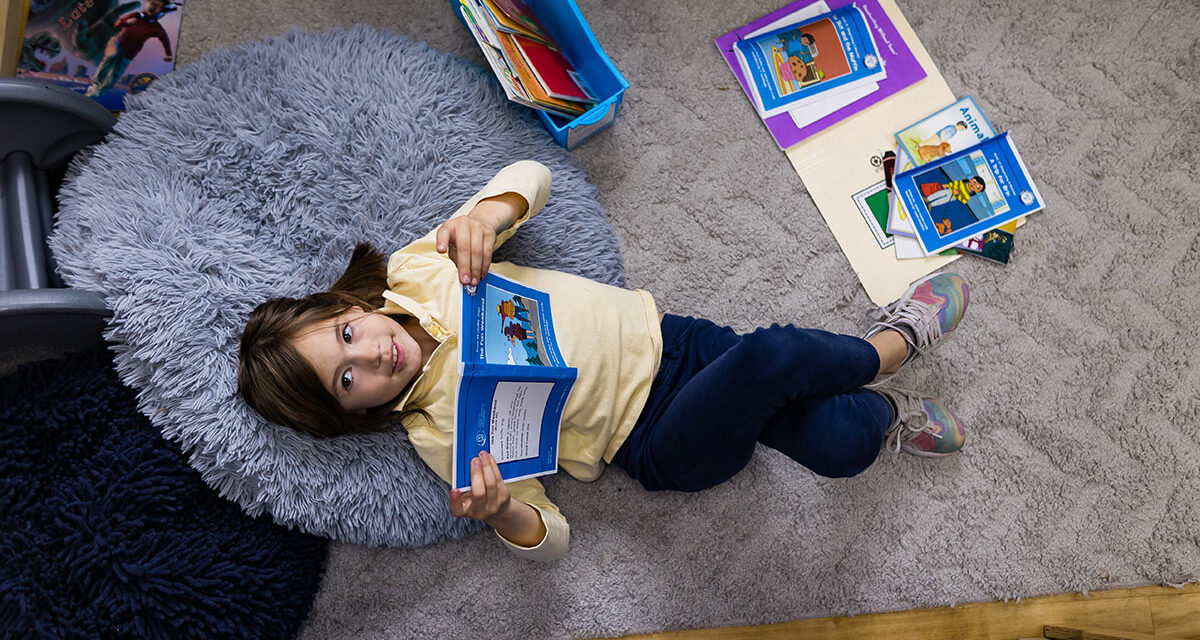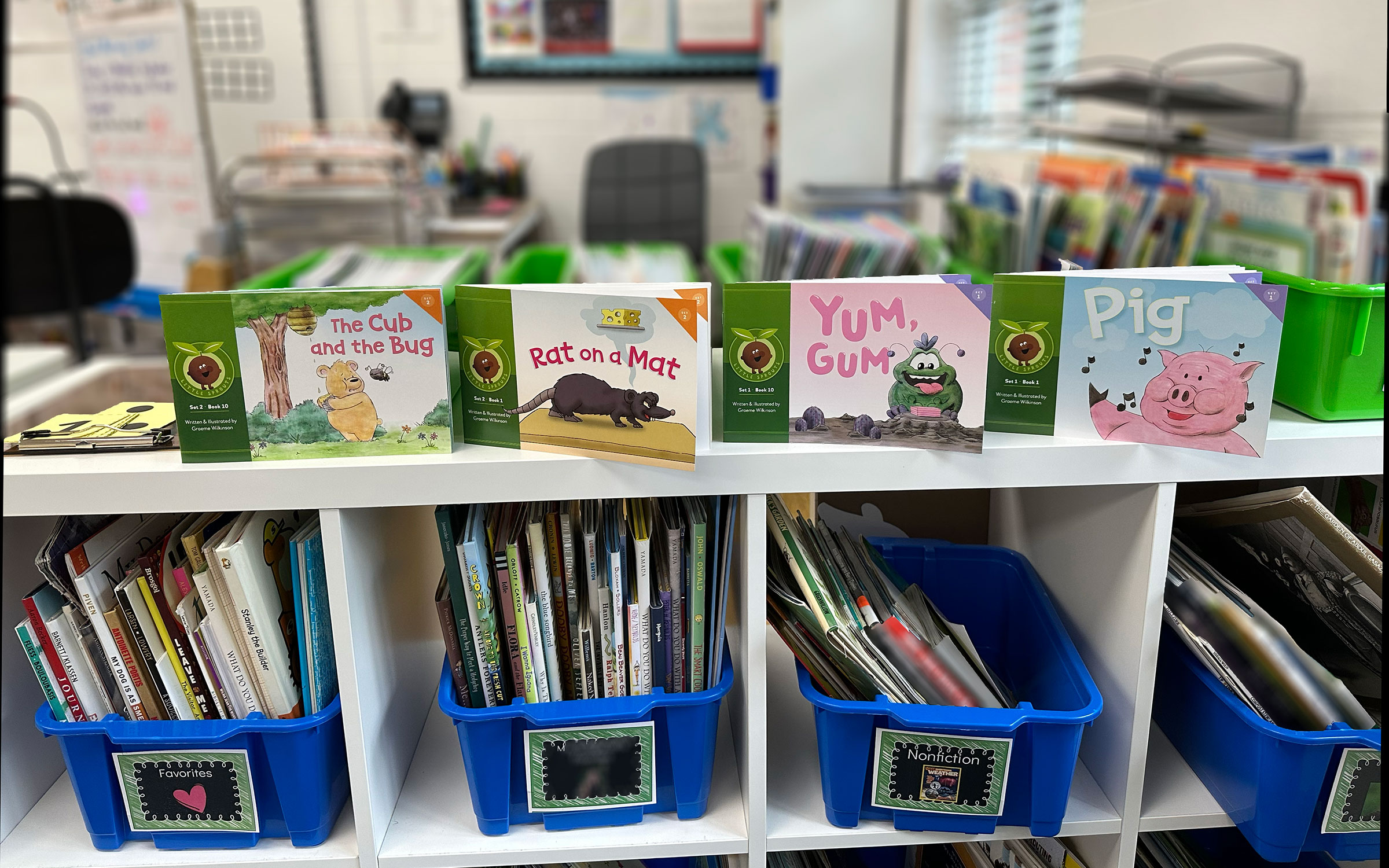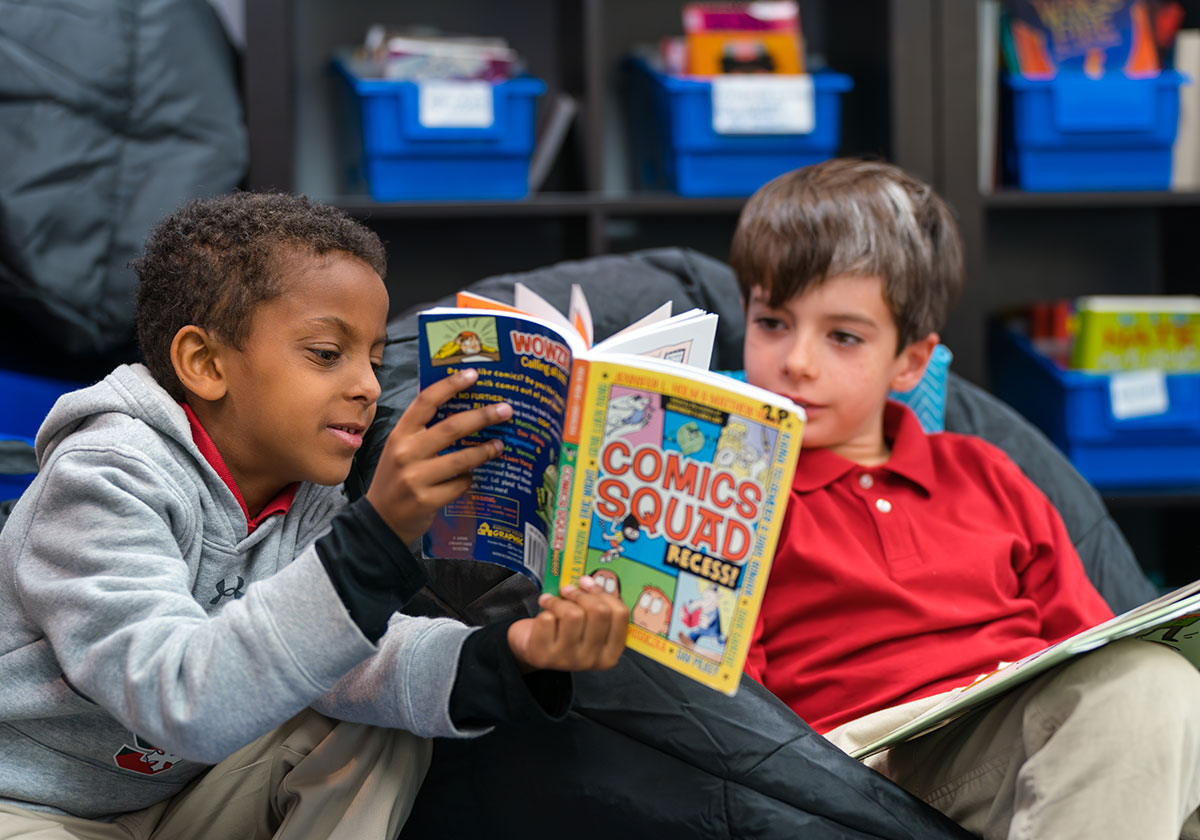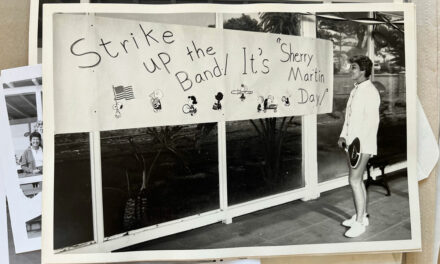
Decodable Delights


Decodable Delights
Unlocking Early Reading Success
By Melissa Ulsaker Maas ’76
Education has come a long way since Dick and Jane and “See spot run.” Our youngest readers are now learning to read through decodable books. At the Lower School, Kate Roessler (director of academic support), Maura Freund (learning specialist), Ali Beach (kindergarten teacher), and Megan Grant (third grade teacher) worked together to submit a request for 350 decodable books, which The Saints Fund supported.
Decodable books are designed for early readers and are crafted with specific grapheme (written representation)-phoneme (sound) correspondences that students have already learned. These books offer an opportunity for learners to apply their developing blending skills as they read words. The goal is to foster automaticity, enabling readers to recognize letter-sound relationships quickly and effortlessly, leading to independent reading success.

Unlike other reading approaches that rely on pictures or contextual clues, decodable books encourage children to sound out words using decoding strategies, rather than guessing from pictures or relying on other cues. The strategies become relevant once beginning readers have acquired a foundational understanding of basic grapheme-phoneme correspondences and can blend words from left to right.
While all books and texts are technically “decodable” if one has the requisite reading ability, true decodability for early readers lies in books that align with the specific alphabetic code they have been taught. This ensures that the content matches their current level of phonetic knowledge and supports their continued reading development. To be considered a decodable book, at least 64% or more of the words should be identifiable using phonics elements.
Early readers are highly motivated to read independently through the use of decodable texts, as they experience success in applying their newly acquired knowledge. These texts serve as a practical application of their learning, helping to deter the adoption of ineffective reading strategies. As students enhance their word reading skills and achieve success in their application, decodable texts offer numerous opportunities for independent practice and repetition—essential elements for skill building and transfer.
Achieving fluency in reading requires the orthographic mapping of words and spelling sequences, facilitating automatic word recognition. Decodable texts play a crucial role in providing exposure and meticulous attention to accuracy at the word level, essential for the development of orthographic mapping.
Of course, in addition to learning through decodable texts, our young readers are surrounded by high quality children’s literature that contains more complex vocabulary and sentence structures. They have class time during which they can choose books that interest them and their teachers read to them every day. This gives them the opportunity to hear good reading models, as well as develop the vocabulary and syntax that will support their reading development.




